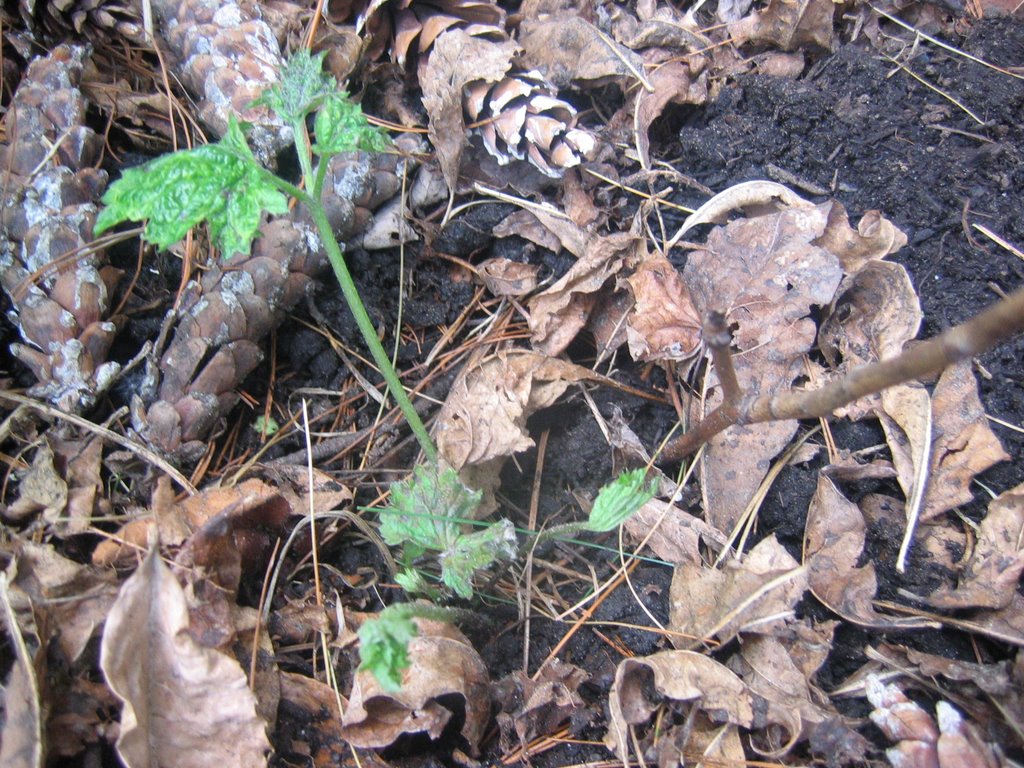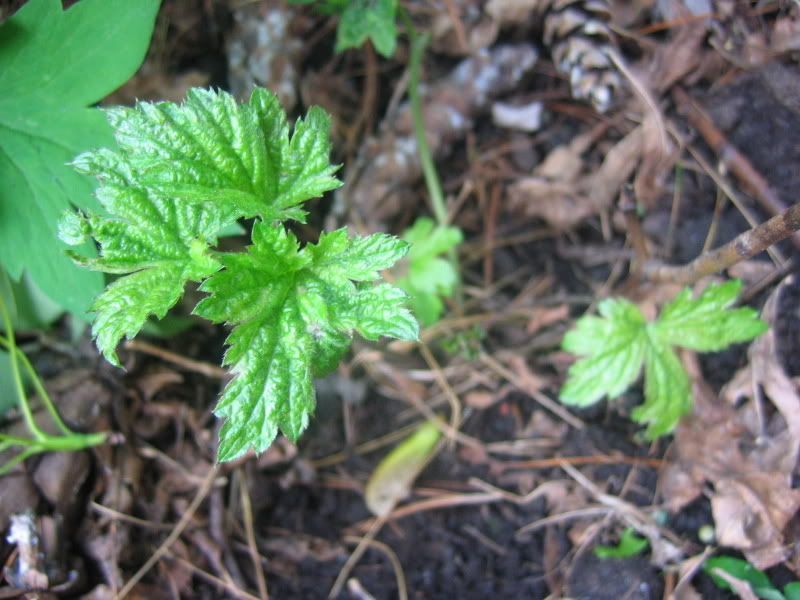All-purpose spray saves the anemone
 Anemone tomentosa 'Robustissima' is quite the name and it was largely on the strength of that name that I bought this plant. "Robustissima" means very robust and I figured that was a pretty good guarantee that I was getting a tough-as-nails plant despite its deceptively fragile-looking flowers. Well, tough as nails it may be, but even nails can rust.
Anemone tomentosa 'Robustissima' is quite the name and it was largely on the strength of that name that I bought this plant. "Robustissima" means very robust and I figured that was a pretty good guarantee that I was getting a tough-as-nails plant despite its deceptively fragile-looking flowers. Well, tough as nails it may be, but even nails can rust.
As each leaf has emerged this spring, it has promptly acquired unpleasant dark colours that it is not supposed to have. It is a plant that normally appreciates a moist setting, but we have had double the normal amount of rain this month. When you combine the almost unceasing rain - how do they survive in Vancouver!? - with the heavy clayish soil that most of Ottawa is built on, this tough little plant is gasping for help.
Janet to the rescue. The dark colours didn't look quite like mildew, but I figured it was probably something fungal nonetheless, given the circumstances and the fact that this same plant had healthy foliage last spring in somewhat dryer conditions. Now the cheapest, easiest way to deal with - or better yet, prevent - mildew and its ilk is with a baking soda solution. Seeing as I have both a limited number of spray bottles and with such a small garden, not enough plants to empty most of them over the season, I added the baking soda to my favorite home-made pest repellent. After picking off any leaves that looked beyond hope, I've been spraying the poor little anemone as well as an equally unhappy-looking bee balm during breaks in the rain, and they have both perked up admirably.
The dark colours didn't look quite like mildew, but I figured it was probably something fungal nonetheless, given the circumstances and the fact that this same plant had healthy foliage last spring in somewhat dryer conditions. Now the cheapest, easiest way to deal with - or better yet, prevent - mildew and its ilk is with a baking soda solution. Seeing as I have both a limited number of spray bottles and with such a small garden, not enough plants to empty most of them over the season, I added the baking soda to my favorite home-made pest repellent. After picking off any leaves that looked beyond hope, I've been spraying the poor little anemone as well as an equally unhappy-looking bee balm during breaks in the rain, and they have both perked up admirably.
To make this spray, you measure 2 tbsp. (30 mL) Murphy's Oil Soap, one capful of yellow mouthwash, and 1 tsp. (5 mL) baking soda into a one litre spray bottle and top up with water. Spray on anything that is inclined to mildew, like phlox, bee balm, anemones, or anything that critters like to munch on, as rabbits and squirrels don't like the taste. Renew about once a week or after a rain.
I've also found it effective to stop tom cats from marking their territory. Before my female cat was fixed, the local toms would spray the wall by the back door till the odour was enough to make you gag. Spraying the wall with this solution broke them of the habit.
Now if you'll excuse me, it isn't raining today (yes!), and I've got plants to spray.


5 comments:
Hi Janet
I have to say I am really enjoying your blog on your garden. I'm a bit of a novice, trying perenniels for the first time this year. I hope to be able to share with you once my babies take. The weather finally looks nice for us in Ottawa in the coming days. Finallllllly.
Thanks Karen. Looking forward to hearing about your experiences.
Finally going to plant tonight....YIPPEEE!!!!!!!!
Janet, when you say "yellow mouthwash" - what does that mean precicely? Any brand? Why yellow and what purpose does the mouthwash serve besides smelling nice? Sounds like a great concoction, but I'd like to get it right. My phlox are coming up and it is raining yet again (New England) so I'd like to get a jump on the mildew thing. Do you think I could use this solution on a Clematis with an early wilt? Happens every season... the clematis comes up the lightpost like gangbusters and then before it can even flower, bammo...half the plant is wilted. Would love to keep this from repeating. Thanks Janet. Your photos are inspiring! Trish
Trish, any brand of yellow mouthwash. I honestly don't know why yellow, that's how JohnV said to do it, and it works! But if you are going to use it just for mildew, the baking soda and soap should be enough. I just like having lots of problems solved with one bottle.
I kind of doubt it would work with clematis wilt. I do know that you should cut the clematis just below the point where the wilt starts, disinfecting your pruners after each cut.
Thanks a lot for the kind words and happy gardening!
Post a Comment